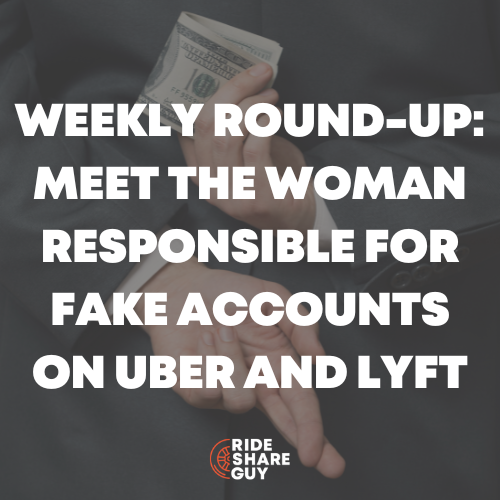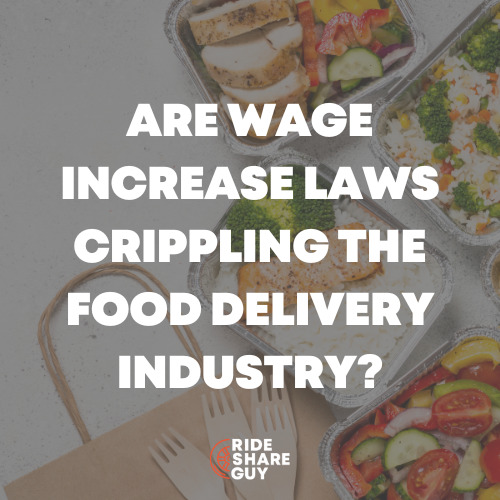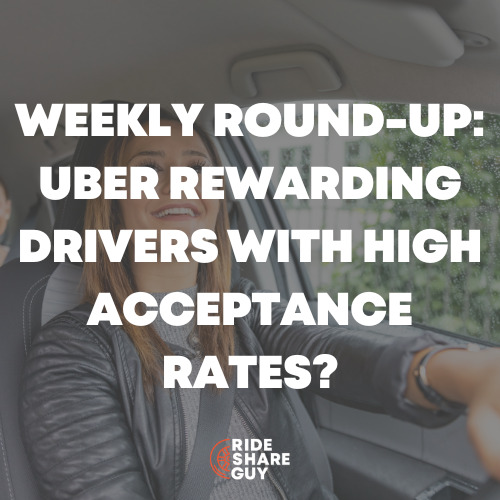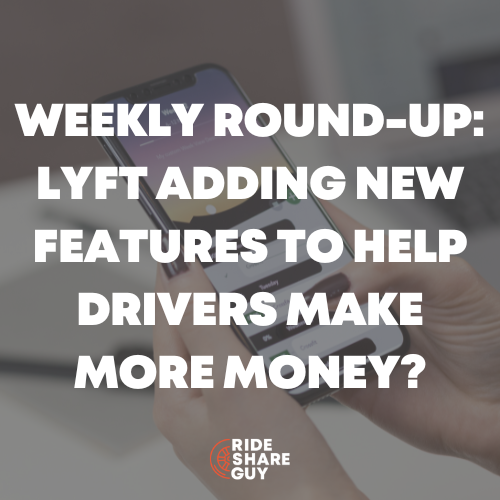Harry here. I attended an event this week in LA that had to do with labor in the On Demand Economy. Even though it may not seem like it, pending lawsuits like the big Uber employee misclassification one could set a huge precedent for millions of workers, employees at these companies and the investors behind these companies.
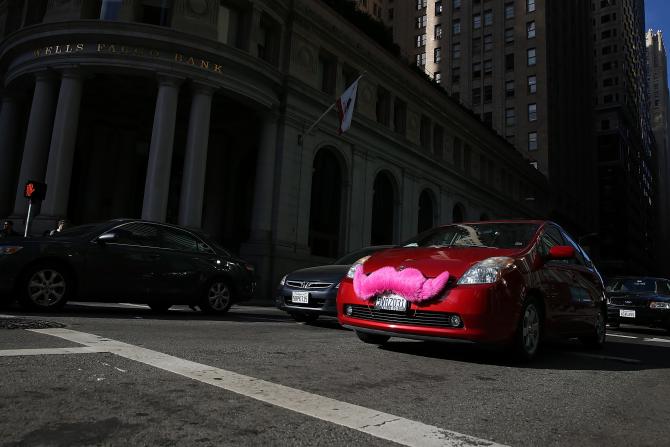
But even though there’s clearly a lot at stake, there may not be an official result for years to come. I always felt that the lawsuit against Lyft was more of an add-on than anything so this settlement wasn’t a huge surprise. But I would be shocked if the Uber lawsuit was settled since I think it’s pretty clear that the relationship between drivers and Uber is not a true independent contractor relationship.
Today, RSG contributor John Ince shares the details on Lyft’s settlement, highlights a profile of the lawyer (SLR) in the case and talks about his experience transporting minors.
Lyft settles California driver lawsuit over employment status
Sum and Substance: Ride-hailing service Lyft has agreed to settle a proposed class action lawsuit in California by giving drivers additional workplace protections but without classifying them as employees, removing a major threat to its business model.
The settlement agreement, filed late on Tuesday in San Francisco federal court, provides for Lyft to pay $12.25 million, as well as give drivers notice if they are to be deactivated from the platform and other benefits. Lyft and larger rival Uber face separate lawsuits brought on behalf of drivers who contend they are employees and entitled to reimbursement for expenses including gas and vehicle maintenance. The drivers currently pay those costs themselves.
The cases have been closely followed because a determination that the workers are employees instead of contractors could affect the valuations for other startups that rely on large networks of individuals to provide rides, clean houses and other services.
While the deal will involve some costs for Lyft, classifying drivers as employees would have been much more expensive and complicated, said Jan Dawson, chief analyst of Jackdaw Research. “It looks like Lyft got off fairly lightly here,” Dawson said. Shannon Liss-Riordan, an attorney for the drivers, acknowledged the settlement does not achieve a reclassification of drivers as employees, but said the benefits are still significant.
My Take: My guess is that Shannon Liss-Riordan decided to get this one out of the way so she could focus her energy on the much bigger fish, Uber, next summer. The arbitration agreement with Lyft made this case much more difficult to make a class action. And without class action, the numbers get much smaller, and remember Uber is 15x larger than Lyft.
It also looks like Shannon Liss-Riordan recognizes the prevailing mindset amongst drivers: while Lyft isn’t perfect, they’re much more attentive to driver’s concerns than Uber. Like most legal cases, the result is murky, but better than nothing. Lyft now just got a strategic leg up on Uber and they no longer have to worry about the big looming challenge to their business model. If you want to know more about the woman whose the driving force behind these lawsuits, read below.
Related: An Interview With Shannon Liss-Riordan (Podcast)
Road Warrior: Is Uber Ripping Off Its Drivers? The Woman Who Beat Starbucks And FedEx In Courts Says Yes
Sum and Substance: Liss-Riordan is spearheading class-action lawsuits against Uber, Lyft, and nine other apps that provide on-demand services, shaking the pillars of Silicon Valley’s much-hyped sharing economy. In particular, she is challenging how these companies classify their workers.
If she can convince judges that these so-called micro-entrepreneurs are in fact employees and not independent contractors, she could do serious damage to a very successful business model—Uber alone was recently valued at $51 billion—which relies on cheap labor and a creative reading of labor laws.
She has made some progress in her work for drivers. Just this month, after Uber tried several tactics to shrink the class, she won a key legal victory when a judge in San Francisco found that more than 100,000 drivers can join her class action.
“These companies save massively by shifting many costs of running a business to the workers, profiting off the backs of their workers,” Liss-Riordan says with calm intensity as she sits in her Boston office, which is peppered with framed posters of Massachusetts Sen. Elizabeth Warren. The bustling block below is home to two coffee chains that Liss-Riordan has sued. If the Uber case succeeds, she tells me, “maybe that will make companies think twice about steamrolling over laws.”
My Take: Shannon Liss-Riordan has won some big cases against big clients. But the Uber lawsuit coming to trial in San Francisco next summer is the biggest. Not only the rideshare business, but the entire sharing economy will be shaped by the outcome of this case. This is a great profile of the woman behind it all.
If she wins, Uber could be on the hook for millions or even billions of dollars in restitution. Liss-Riordan has all her arguments down pat. From my reading of the law, I think she’s got a very strong case. The big question is what Uber has up its sleeve to blunt the impact of a possible adverse ruling in the case: appeals for sure, but during the appeal process investors will likely cool to the company. And if investor capital stops flowing and Uber’s burn rate remains up in the $1.7 billion/year range, I just don’t see how the Uber story ends up with a happy ending.
Uber Is Never Going To Stop Abusing Its Drivers
Sum and Substance: The post, written by former Uber driver Dave Craige, revealed that Uber is now paying a pathetic 30 cents a mile to drivers in Detroit. By comparison, Craige points out that cab drivers in New York were paid a dollar a mile… in 1970.
We can all agree that’s outrageous. What apparently Craige and I disagree on is the solution. In his long, long post, Craige repeatedly begs Uber to explain when they’re going to stop treating their drivers like crap. He asks “Where are you [sic] standards for your drivers? Where will you set the line?” he pleads “Where the hell is the bottom?” Craige, who has registered the URL “Not Cool Uber” is hoping for a dialogue with the company, one that will make them understand how badly it is treating drivers, and how much those drivers are suffering.
Uber has made no secret about this. The company has constantly boasted that the more drivers it signs up, the more it will push down wages. CEO Travis Kalanick has said on multiple stages that he longs for the days he can get rid of drivers completely. If you’re an Uber driver unhappy with a future in which Uber will pay you less and less for doing more and more, there’s only one sensible course of action. Quit.
My Take: Pando Daily has been one of Uber’s greatest critics and this article follows up in their hard hitting tradition. Drivers who feel they are being exploited by the $62 billion-worth Uber will take solace in the words of the author, who essentially says that Uber doesn’t care a wit about drivers. In fact, he says they’re laughing at drivers because they’re so stupid to continue working under such slavish terms and conditions. What do you think?
Uber to start giving you things to do while you’re on your trip
Sum and Substance: If looking out the car window during an Uber ride is just too old school for you — and you’ve exhausted all other time-killing options on your smartphone — the company has a new way to keep you busy.
On Tuesday, Uber launched a developer feature called Uber Trip Experiences, letting third-party developers give users fun or productive things to do during their trip. Examples include getting a playlist to last you for the duration of the trip; showing you info and offers available at your destination, or letting you turn on the heating when you’re on your way home. One use that sounds especially interesting is gamification, in which Uber riders could earn points or rewards for moving around the city.
My Take: It was only a matter of time until Uber started trying to “monetize” the rider’s attention. This raises several interesting issues. First, if drivers are truly independent contractors, than what business does Uber have in trying to grab the passenger’s attention? From my personal experience, I have found that well over half of passengers want to be engaged in conversation, but for those who don’t, I will direct their attention to what I call “The Treasure Chest.” It’s a small box, shaped like a pirates chest, that is filled with 3×5 index cards. There are now about 100 passenger notes scribbled on the cards that include everything from pop philosophy to diary entries. One passenger simply wrote “Titties” in big bold letters – so I guess we know what was on his mind.
HopSkipDrive, The Ridesharing Startup For Kids, Grabs $10.2M In Series A Funding
Sum and Substance: HopSkipDrive, The LA-based “Uber for Kids”, has closed a $10.2M Series A round co-led by FirstMark Capital and UpFront Ventures, with participation from existing investors BBG Ventures and 1776, and new investors Greycroft Partners and Pritzker Group Venture Capital. The company also announced that it has hired Eyal Gutentag as COO, who previously was general manager of Uber’s Los Angeles operations.
As a refresher, HopSkipDrive lets parents pre-schedule pick-up times for their kids with trusted, thoroughly vetted drivers to shuttle them between school or activities. This vetting includes extensive background checks, vehicle inspection, fingerprinting, participation in ongoing DMV checks, and in-person meeting with the drivers. The company, which has already raised $3.9M in seed funding, will use the new cash to continue expanding beyond LA, as well as strengthen their product development team.
But while the company has set its sights on expansion, how is HopSkipDrive faring in its hometown of LA? Cofounder Joanna McFarland explained that the majority of the “thousands of families” using the service in LA are using it several times a week. The top 25 percent of customers are using the service several times a day. This retention rate is pretty impressive, and shows that HopSkipDrive’s service offerings have become an essential part of many LA-based families’ daily routine.
My Take: This whole issue of transporting kids and teens is a fascinating one. It raises all kinds of questions some legal, some parental, some societal. One of the revelations to me as a driver has been how the car has become one of the last places in our society where people can have uninterrupted conversations. I end up with a lot of teens in my car in Marin and I now probably know more about teens in Marin than a lot of parents do, or at least I get a more honest picture than parents.
Why are parents so willing to give that opportunity to get to know their kids away to complete strangers? What else are they doing that that is so much more important than spending time with their kids and transporting them safely? And would you trust your kids to be in the company of complete strangers who in most case have been only loosely vetted?
Drivers, what do you think about the week’s top stories and the recent Lyft settlement?
-John @ RSG

